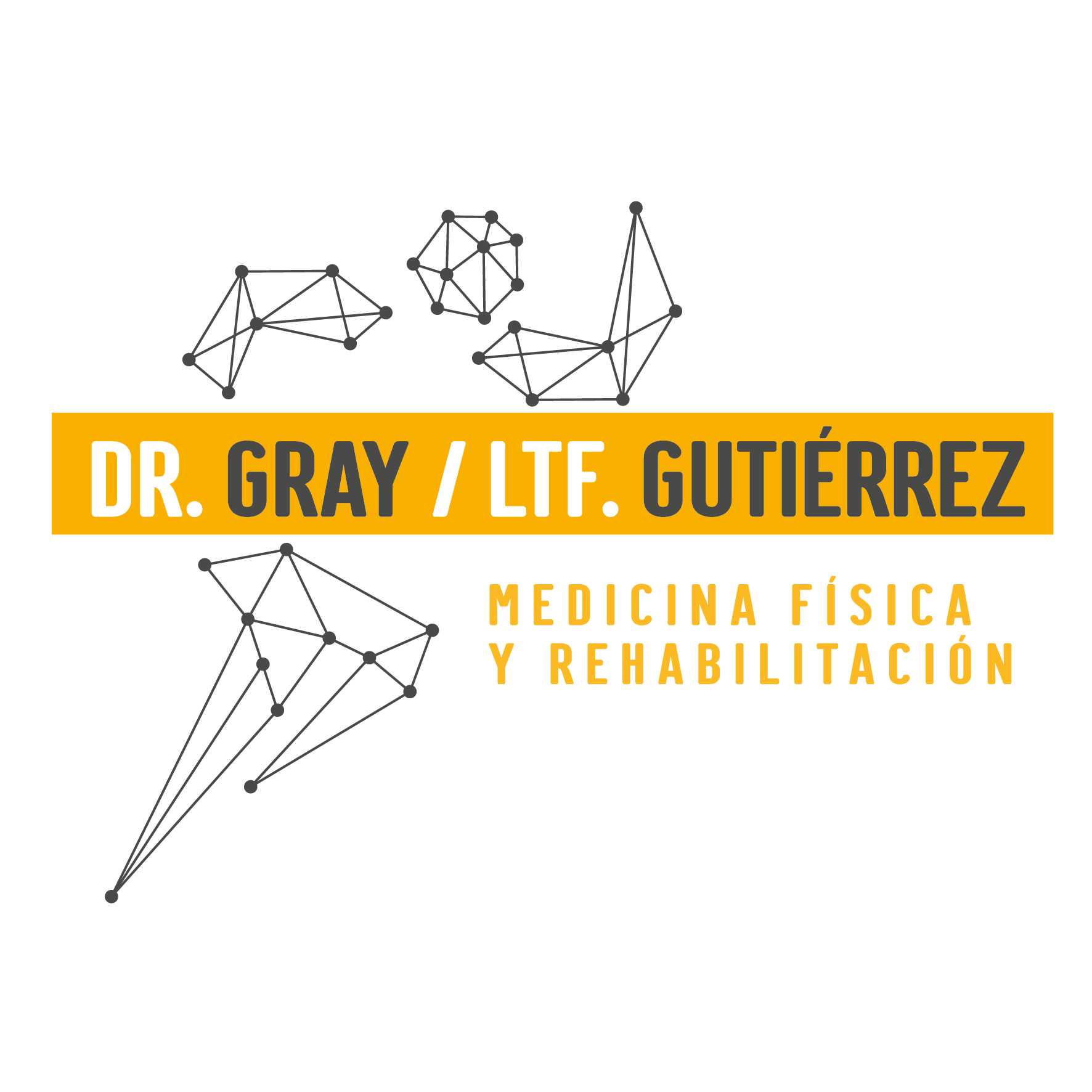Contact me today! Send me a message
01
PHYSIOTHERAPY
My goal is to relieve and free you from pain.
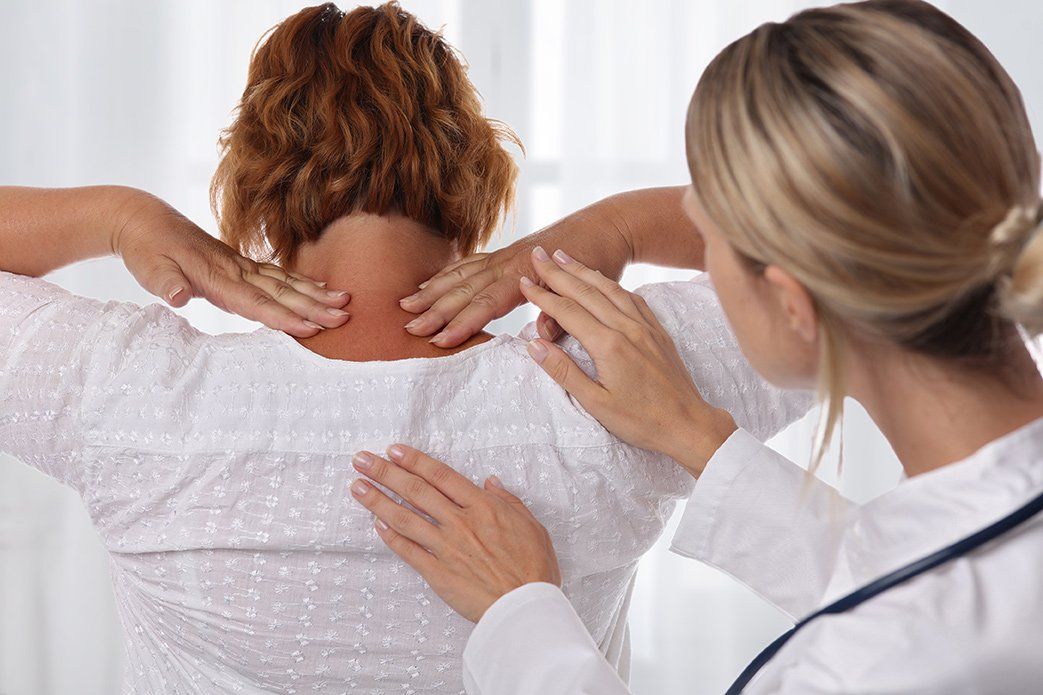
Physiotherapy encompasses therapeutic techniques to treat musculoskeletal, neurological and physical problems. Manual therapy, exercises, treatment modalities, and patient education are used to improve function and well-being.
Physical therapists treat injuries, back pain, posture problems, sports injuries, neurological rehabilitation, and more.
Techniques include manual therapy, massage, stretching, muscle strengthening, electrotherapy, and aquatic therapy. In addition to treating, they educate in self-care and injury prevention.
In summary, physical therapy improves physical function and quality of life through personalized, patient-centered approaches.
02
Neurological Rehabilitation
With professional training and certification
Neurological rehabilitation is a specialized therapeutic approach aimed at people who have experienced injuries or diseases of the central or peripheral nervous system, such as stroke, spinal cord injury, multiple sclerosis, traumatic brain injury or neuropathy. This type of rehabilitation focuses on improving patients' function and quality of life through techniques and strategies designed to maximize brain plasticity and promote neuromuscular recovery.
The primary goal is to help patients regain lost or impaired skills and learn compensation strategies to address functional limitations that may persist.
Interventions in neurological rehabilitation may include mobility exercises, mirror therapy, robot-assisted gait therapy, functional electrical stimulation, motor skills training, cognitive and language therapy, as well as biofeedback and neurofeedback techniques. Additionally, assistive devices such as orthoses, braces, and adaptive mobility devices can be used to improve independence and functionality in daily life.
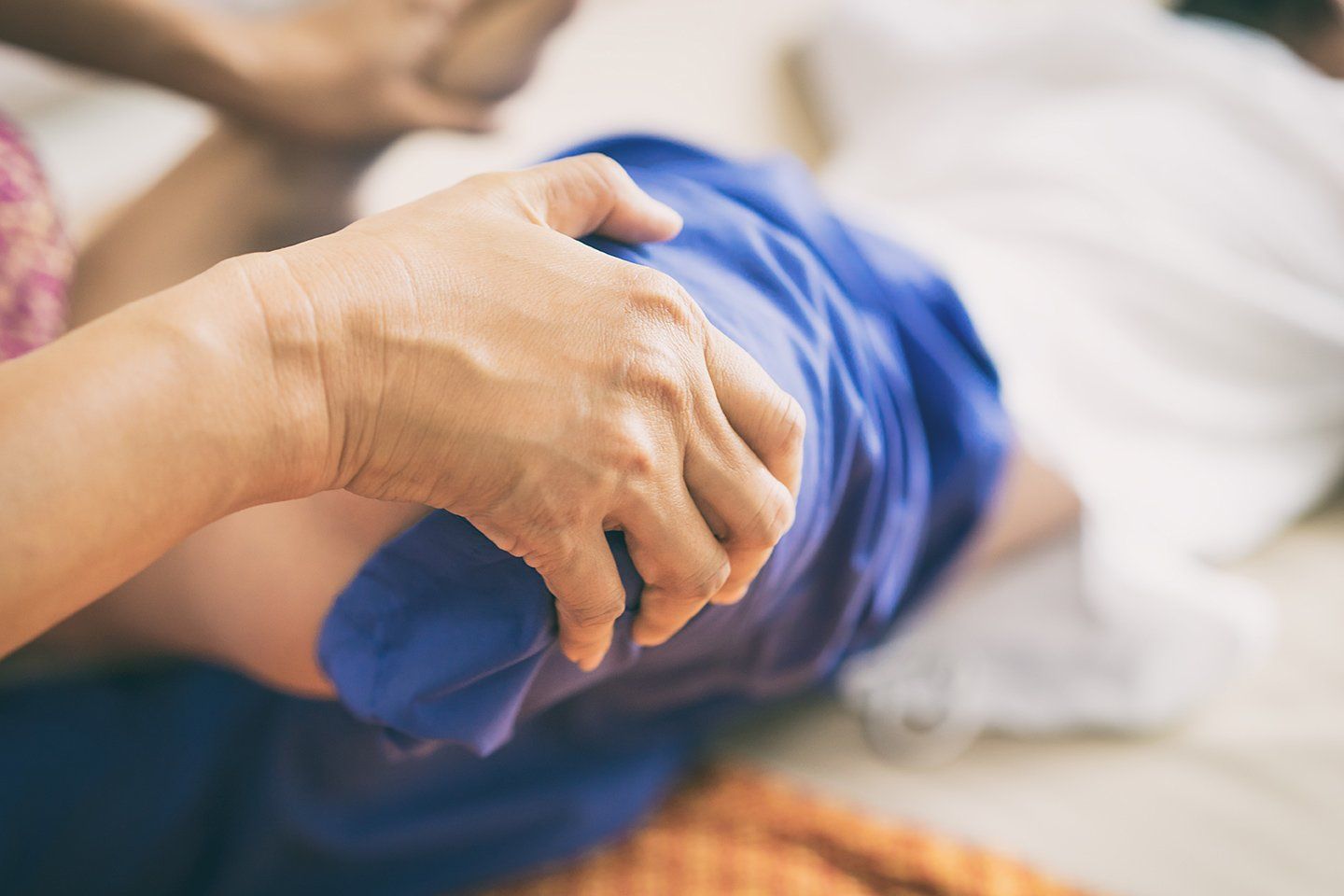
03
ELECTROMIOGRAPHY
Discover the importance of electromyography in muscle health
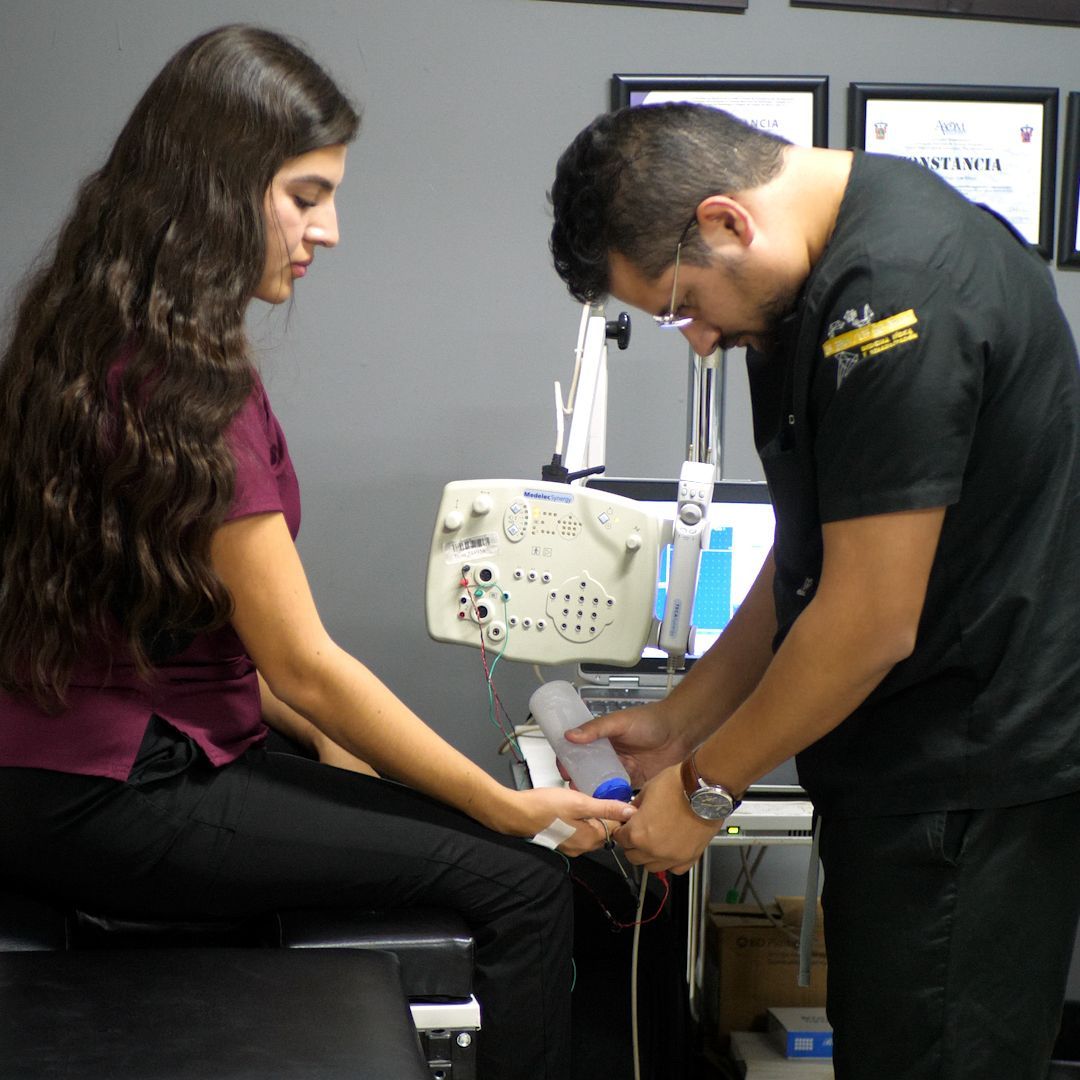
Electromyography (EMG) is a medical procedure that evaluates the electrical activity of muscles and the nerves that control them.
This technique is used to diagnose neuromuscular disorders, such as neuropathies, nerve injuries, muscle diseases, and neuromuscular junction disorders.
During the procedure, electrodes are placed on the skin or thin needles are inserted into the muscles to record electrical activity.
EMG results provide crucial information about muscle and nerve function, helping doctors diagnose and plan appropriate treatment for a variety of neuromuscular conditions. Electromyography is a valuable tool in the field of neurology and physiotherapy, allowing accurate evaluation and effective management of neuromuscular disorders.
04
Knee Injuries
Relief of pain associated with an injury
Physical therapy for the knee is an integral component in the treatment of injuries and conditions that affect this crucial joint.
Through a combination of exercises, stretching techniques, targeted muscle strengthening, and treatment modalities such as manual therapy and electrotherapy, physical therapy seeks to restore normal knee function, relieve pain, and improve mobility.
Exercises may include knee flexion and extension movements, as well as strengthening exercises for the muscles surrounding the joint, such as the quadriceps and hamstrings. Additionally, modalities such as ultrasound, heat or cold therapy, and compression therapy can be used to reduce inflammation and promote healing.
Physical therapy for the knee is tailored to each patient's individual needs, with the goal of regaining optimal function and preventing future injuries. Working hand in hand with a physiotherapist specialized in knee treatment can be essential for a successful and long-lasting recovery.
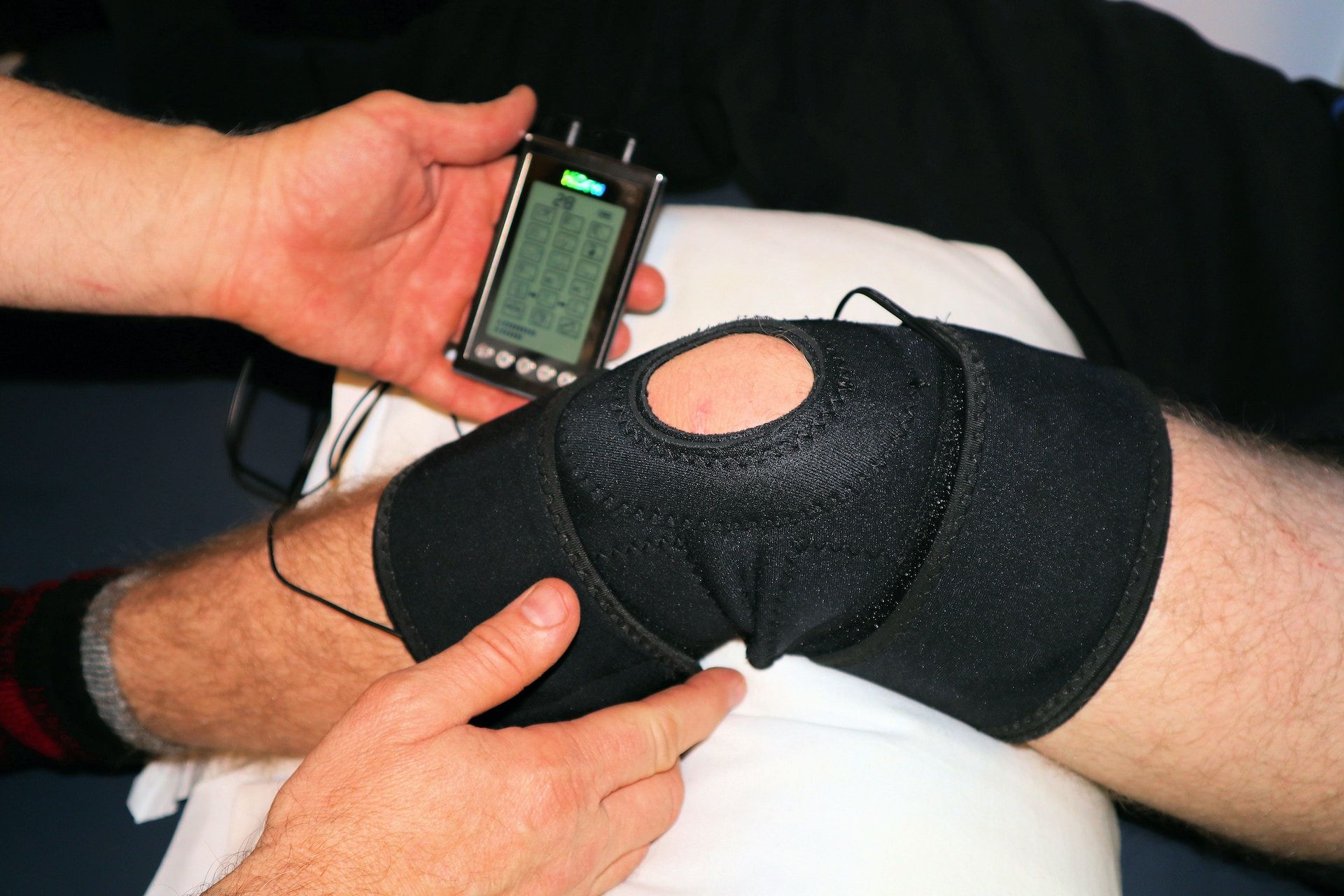
05
Rehabilitation
Accelerating your recovery from trauma and injuries
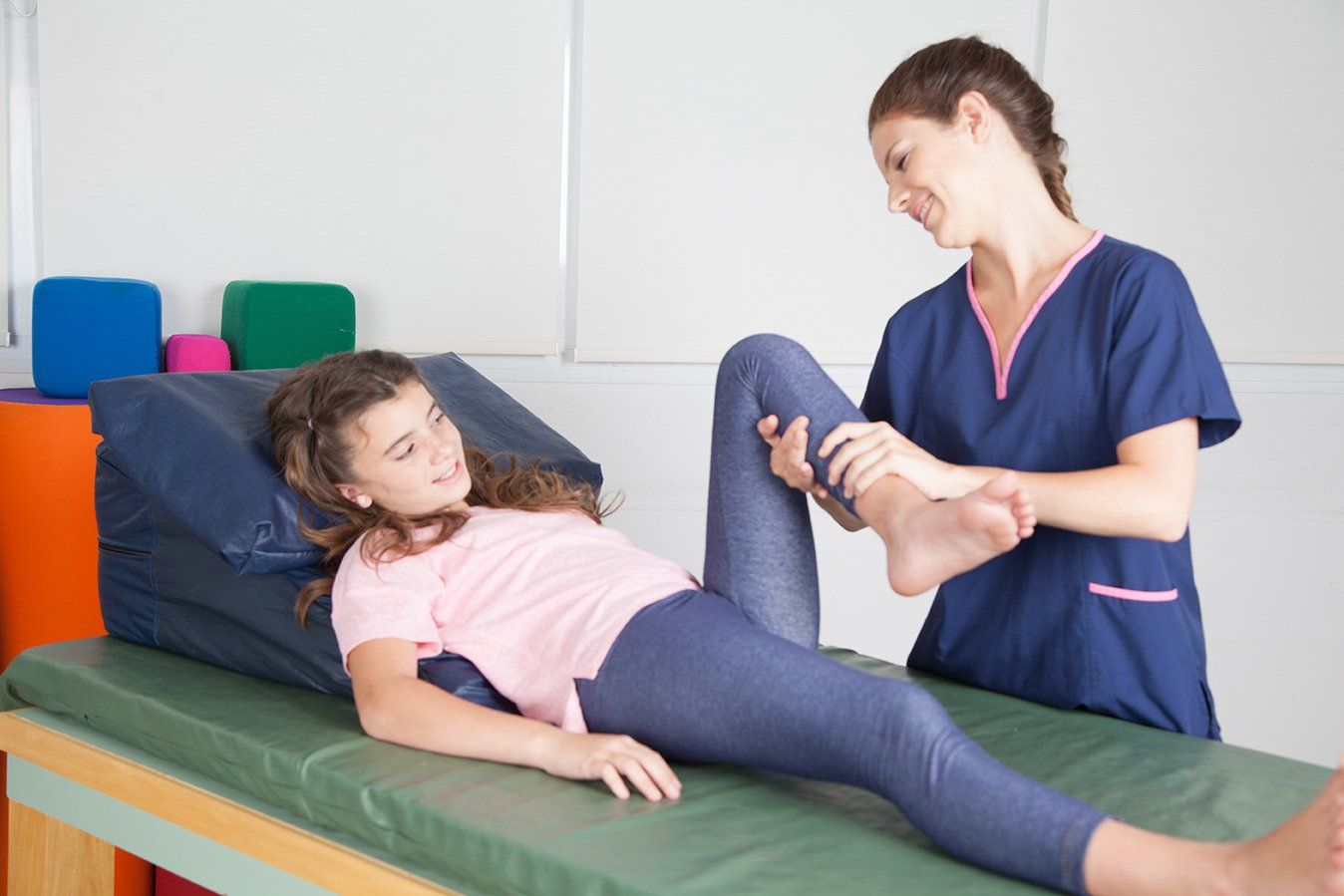
Injury rehabilitation is a multidisciplinary process designed to help individuals recover from musculoskeletal, neurological or traumatic injuries.
This process focuses on restoring lost function and mobility, reducing pain, and preventing future complications.
Depending on the type and severity of the injury, the rehabilitation plan may include a variety of interventions, such as therapeutic exercises, manual therapy, treatment modalities (such as cryotherapy, thermotherapy, ultrasound), balance and coordination training, as well as education on techniques. injury prevention. Injury rehabilitation may also involve the use of assistive devices, such as orthotics or assistive devices, to facilitate recovery.
Additionally, rehabilitation professionals work closely with other healthcare specialists, such as physicians, physical therapists, occupational therapists, and sports trainers, to ensure a comprehensive and coordinated approach to patient recovery. The ultimate goal of injury rehabilitation is to optimize physical function and improve the quality of life of the affected individual.
06
Chronic pain
Reduction of various types of chronic pain
Chronic pain management involves a comprehensive approach that addresses both the physical and emotional aspects of persistent pain.
Multidisciplinary techniques are used to help individuals manage and reduce their pain, as well as improve their quality of life.
These approaches may include physical therapies such as therapeutic exercise, physical therapy, occupational therapy, and relaxation techniques such as meditation and deep breathing.
Additionally, treatment modalities such as cognitive behavioral therapy, pain therapy, acupuncture, chiropractic, and pharmacotherapy may be used to help manage pain and improve physical and emotional function.
Patient education about pain management, proper nutrition, sleep, and coping strategies are also important components in chronic pain management.
The goal is to improve quality of life by reducing pain, increasing function, and promoting the patient's overall well-being.



